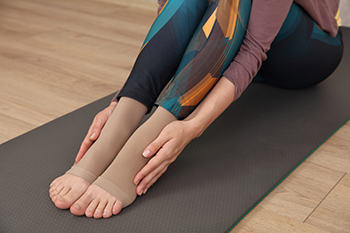
Peripheral artery disease, also known as PAD, is a common circulatory condition that primarily affects the arteries of the legs and feet. It occurs when fatty deposits build up in the arteries, causing them to narrow and reduce blood flow to the limbs. Symptoms of PAD include pain, cramping, and fatigue in the legs and feet, especially during physical activity. If severe, this condition can lead to pain at rest, non-healing wounds or ulcers, and tissue damage or gangrene. Treatment aims at relieving symptoms and preventing complications. While non-invasive imaging tests have been used to assess PAD, recent advancements in MRI techniques have had a significant impact on the diagnosis and understanding of this disease. If you are suffering from peripheral artery disease and have troublesome foot symptoms, it is strongly suggested that you make an appointment with a podiatrist to see if any of the newer advancements in testing can better pinpoint effective treatment for you.
While poor circulation itself isn’t a condition; it is a symptom of another underlying health condition you may have. If you have any concerns with poor circulation in your feet contact Dr. Richard T. Bauer of Summit Foot & Ankle. Our doctor will treat your foot and ankle needs.
Poor Circulation in the Feet
Peripheral artery disease (PAD) can potentially lead to poor circulation in the lower extremities. PAD is a condition that causes the blood vessels and arteries to narrow. In a linked condition called atherosclerosis, the arteries stiffen up due to a buildup of plaque in the arteries and blood vessels. These two conditions can cause a decrease in the amount of blood that flows to your extremities, therefore resulting in pain.
Symptoms
Some of the most common symptoms of poor circulation are:
- Numbness
- Tingling
- Throbbing or stinging pain in limbs
- Pain
- Muscle Cramps
Treatment for poor circulation often depends on the underlying condition that causes it. Methods for treatment may include insulin for diabetes, special exercise programs, surgery for varicose veins, or compression socks for swollen legs.
As always, see a podiatrist as he or she will assist in finding a regimen that suits you. A podiatrist can also prescribe you any needed medication.
If you have any questions, please feel free to contact our office located in Latham, NY . We offer the newest diagnostic and treatment technologies for all your foot care needs.
